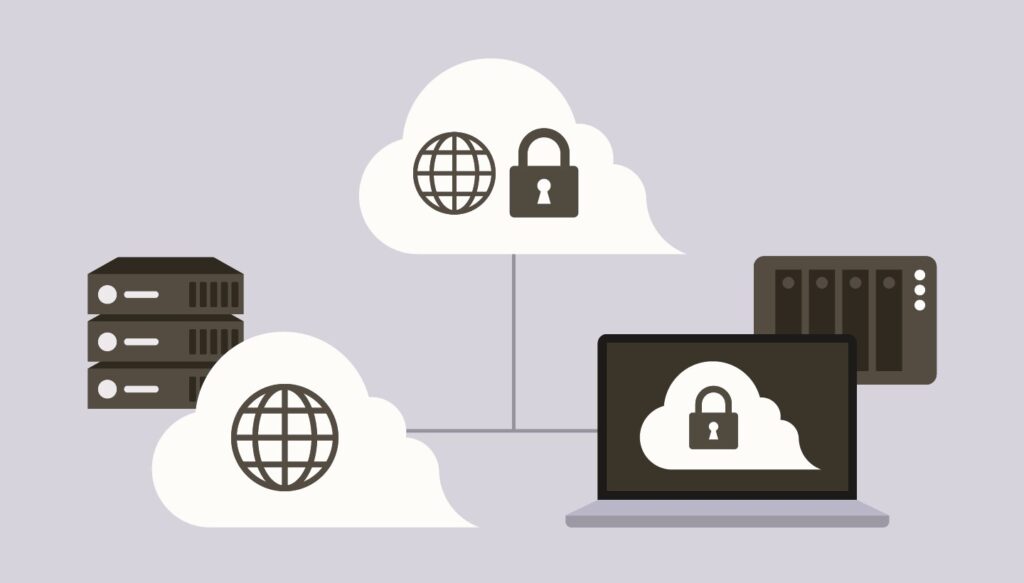In the ever-expanding digital landscape, cloud computing has emerged as a transformative force, reshaping how businesses and individuals store, access, and process data. As organizations navigate the cloud to meet their diverse needs, the choice between public, private, and hybrid cloud solutions becomes a pivotal decision. In this exploration, we delve into the characteristics, advantages, and considerations of each cloud model, providing insights to guide stakeholders in making informed decisions.
Understanding Public Cloud Solutions:
Overview: Public cloud solutions are services provided by third-party cloud service providers and made available to the general public over the internet. These services, such as computing power, storage, and applications, are hosted in the provider’s data centers and shared among multiple users.
Advantages:
- Cost-Effective: Public clouds operate on a pay-as-you-go model, allowing organizations to scale resources based on their needs and pay only for what they use.
- Scalability: Public clouds offer virtually unlimited scalability, enabling businesses to quickly adapt to changing workloads and demands.
- Global Accessibility: Users can access public cloud services from anywhere with an internet connection, promoting flexibility and collaboration.
Considerations:
- Security Concerns: As resources are shared among multiple users, security concerns may arise. Robust security measures are essential to safeguard data.
- Customization Limitations: Public cloud services may have limitations on customization, as users operate within the confines of the provider’s infrastructure.
Exploring Private Cloud Solutions:

Overview: Private cloud solutions involve the exclusive use of cloud resources by a single organization. These resources can be hosted on-premises or by a third-party provider, offering a dedicated environment with enhanced control and privacy.
Advantages:
- Enhanced Security: Private clouds provide a higher level of control over security measures, making them suitable for organizations with stringent data privacy requirements.
- Customization: Organizations have greater flexibility to customize the private cloud infrastructure to meet specific business needs and compliance standards.
- Performance Control: With dedicated resources, organizations can optimize performance for their specific workloads. Read our Metaverse Exploration about the new frontier of digital interaction.
Considerations:
- Cost: Private clouds typically require a significant upfront investment in infrastructure. Ongoing maintenance and operational costs should also be considered.
- Limited Scalability: While scalable, private clouds may not offer the same level of rapid scalability as public clouds.
Embracing Hybrid Cloud Solutions:
Overview: Hybrid cloud solutions combine elements of both public and private clouds, allowing data and applications to be shared between them. This approach offers a balance between the scalability of the public cloud and the control of a private cloud.
Advantages:
- Flexibility: Hybrid clouds provide the flexibility to move workloads between public and private environments based on changing requirements and priorities.
- Scalability and Cost-Efficiency: Organizations can leverage the scalability of the public cloud for peak workloads while using the private cloud for sensitive or critical operations.
- Disaster Recovery: Hybrid cloud architectures enhance disaster recovery capabilities by allowing data to be replicated and backed up across both environments.
Considerations:
- Complexity: Managing a hybrid cloud environment can introduce complexity, requiring careful planning and integration to ensure seamless operation.
- Data Governance: Organizations must establish robust data governance policies to manage data movement between public and private clouds securely.
Choosing the Right Cloud Solution:

The choice between public, private, and hybrid cloud solutions hinges on various factors, including organizational goals, data sensitivity, budget constraints, and scalability requirements. As organizations embark on their cloud journey, evaluating these factors can guide them toward the most suitable model.
Platforms for Staying Informed:
To stay informed about the latest trends and developments in cloud computing, platforms like GameSpot offer insightful articles and discussions on technology. While these platforms are renowned for gaming and entertainment coverage, they frequently delve into broader tech topics, making them valuable resources for staying abreast of industry advancements.
Conclusion: A Strategic Approach to Cloud Adoption
In the dynamic landscape of cloud computing, organizations must adopt a strategic approach to align their cloud solutions with business objectives. Whether opting for the scalability of the public cloud, the control of a private cloud, or the flexibility of a hybrid model, the decision should be rooted in a thorough understanding of organizational needs and priorities. As technology continues to evolve, the cloud remains a cornerstone of digital transformation, providing the foundation for innovation, efficiency, and resilience in an increasingly interconnected world.


